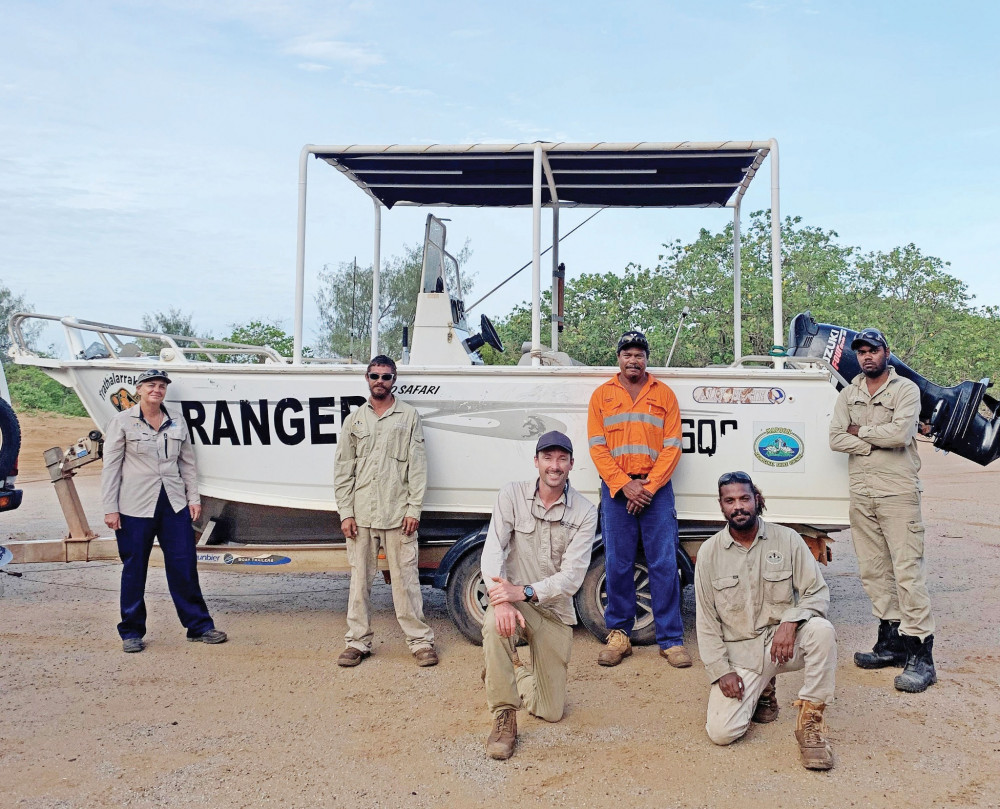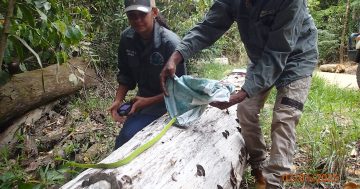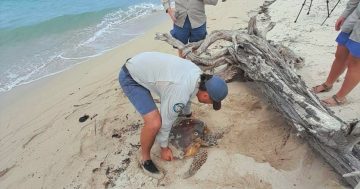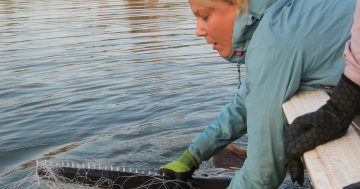
Harry Nevard is the company’s senior advisor on threatened species and last month worked closely with local rangers and Dr Ross Dwyer from the University of the Sunshine Coast to capture and tag speartooth sharks in the Ducie and Wenlock catchments.
“The speartooth shark (Glyphis glyphis) is critically endangered, found in few select river systems in northern Australia and Papua New Guinea,” Mr Nevard said.
“Although known in Australia as the Bizant River shark or the Queensland river shark, it is believed that this species is extinct across almost all of its former range in Queensland, with juveniles now found only in the Port Musgrave and the Ducie/Wenlock catchment in Cape York.”
Previous research programs into this enigmatic species have been led by Dr Dwyer in collaboration with researchers from the University of Queensland, Charles Darwin University and the CSIR), with support from Australia Zoo and the federal government.
This program is now run as a collaborative partnership between the Mapoon rangers, University of the Sunshine Coast and Rio Tinto.
Rio Tinto Weipa is involved because the major and minor tributaries of the speartooth shark form part of the mining lease.
“To track these sharks, juveniles must first be caught and implanted with a small acoustic tag,” Mr Nevard said.
“These tags have a battery life between four and 10 years and are picked up by an array of hydrophone receivers that are positioned throughout the catchment and in the Gulf of Carpentaria. “Rio Tinto and the Mapoon Rangers currently maintain the downstream portion of these receivers, whilst the upstream portion is maintained by UQ and Australia Zoo.
“This array is not only used to track speartooth sharks, but also sawfish, barramundi, bull sharks and the estuarine crocodiles captured and tagged by Australia Zoo and the Irwin family.
“Combined, this receiver array constitutes one of the most extensive and longest running tracking programs in Australia.”
Mr Nevard said without the partnership between the local community, industry and institutions, the work wouldn’t be able to go ahead.
“The upskilling and mentoring of the Mapoon Rangers by Stuart Argent and Ray Ahmat has central to the success of the program,” he said.
“The data captured by the Mapoon Rangers and USC will not only support the conservation of this species, but also help us work sustainably in an area of high biodiversity and cultural importance.”
Data on the shark movements is expected to be released in 2022.





